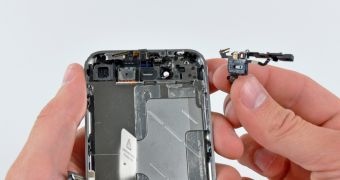A Taiwan source that seldom takes it upon itself to leak Apple’s plans for the future today reports that IC design houses Integrated Memory Logic (iML) and Capella Microsystems are both in talks with Cupertino to provide the Mac maker with new ambient-light sensors for next-generation iPhones.
The agreement could make the duo the first Taiwan-based fables IC vendors to land orders from Apple, industry publication DigiTimes reports.
[admark=1]Apple has a policy of using IC solutions coming from international players only, but it appears that its plans are now changing.
Citing people with knowledge of the matter, the source claims iML’s penetration rate of its programmable Gamma buffers is growing in Taiwan and Korea. Aside from China, iML has offices in the US as well, the report notes.
As for Capella, it ships over one million ambient-light sensors to HTC on a monthly basis.
The vendor has reportedly sent over some units to Cupertino as well, more recently.
Apple is said to be testing them so that they can replace the ones employed by the iPhone 4 which, according to these sources, have been criticized for ‘some problems.’
Finally, these people said, Capella may receive Apple's orders before the end of the year, though nothing seems too certain at this point. Early next year is also a possibility, these people suggested.
An ambient light sensor is not only found in Apple’s iDevices but also in MacBooks and iMacs.
The hardware is tasked with sensing light conditions which are then interpreted by other hardware in order to increase or dim backlighting of the LCD screen to provide a comfortable viewing experience.
On iPhones, the function is activated when the user tweaks the brightness settings so that the iPhone handles this automatically.
Apple has also had some trouble with the proximity sensor on the iPhone 4, though it is not clear whether it was the actual sensor that was faulty, the way the phones were assembled, or even the underlying iPhone software.
A good guess would be that the iPhone 5 will experience less issues with at least these two hardware components, going by Apple’s efforts to source better parts.

 14 DAY TRIAL //
14 DAY TRIAL //